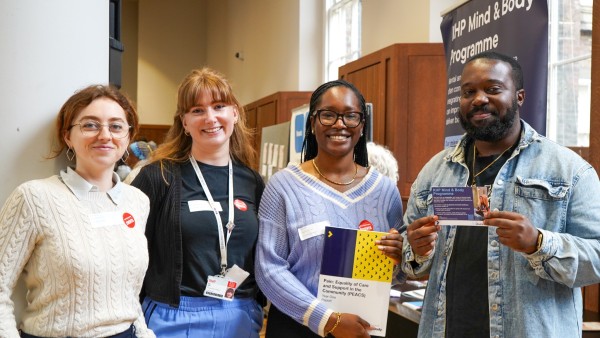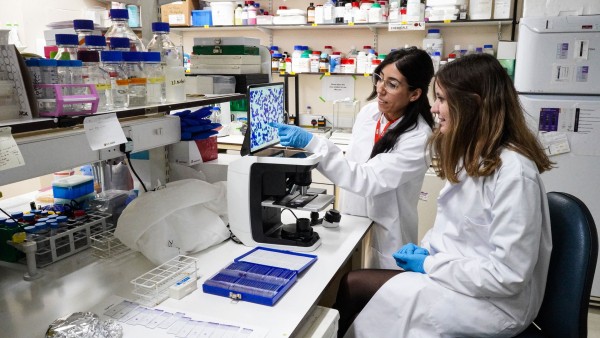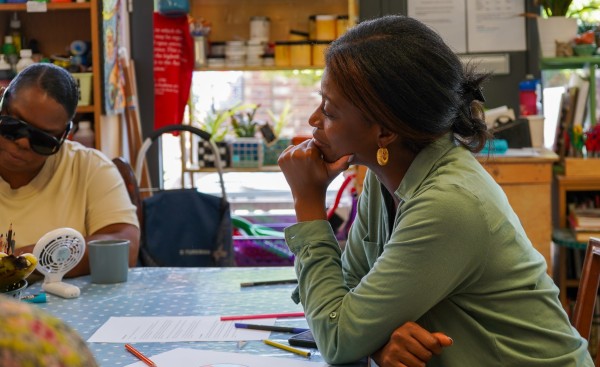25 March 2025
With an ever-evolving health landscape it has never been more important to involve patients and the public at every stage of the research process. Hearing a variety of different perspectives from people with lived experience is a critical part of the developmental stage. New ideas may even lead to a rethink of key parts of the original strategy.
Dr Sarah Crabtree, Patient and Public Involvement/Engagement (PPIE) Coordinator for the KHP Centre for Translational Medicine, explains more about incorporating PPIE into your workflow, and shares useful resources.
Why is patient and public involvement and engagement (PPIE) important?
The involvement of public members is a vital component of research to ensure the work we do is relevant to what the public need in healthcare and to bring their experiences into the research plans. To conduct meaningful PPIE, it is important to involve individuals and communities who best represent the health conditions you are working with (considering ethnicity, socioeconomic status, access to care, gender, etc.) as equal members of the research team.
What do you enjoy most about your role?
My favourite thing about working as a public involvement coordinator is that I can bring together my clinical and research experience. While working clinically I had the opportunity to talk to people living with dementia and their family members, which provided an interesting insight into their challenges and priorities that as a clinician isn’t always obvious.
I love being able to hear about people’s background and experiences to understand how it has led to their current perspectives and opinions. Most of all, I thoroughly enjoy being able to bring these perspectives into research settings. It keeps the focus of healthcare developments on providing healthcare in the most effective and person-centred way possible.
How can PPIE shape a research project?
Within my role, I have heard some innovative examples of how the involvement of PPIE members have shaped a research project. One idea was having members of the public conduct interviews, especially when researching conditions which may be more private or looked down upon in certain cultures. Research participants may feel more understood and relate to each other’s experience within the interview aiming for more honest and open conversation.
A common challenge I hear is how to involve members of the public in highly scientific research such as lab work. In these situations, it is important to think of your end goal and the overall context of your research. Some examples of how this can be done include gathering insight into symptoms and side effects that affect activities of daily living, or perspectives on medication delivery. Involving the public in research requires creative thinking and being open to unexpected ideas. Although it can be challenging, it’s also a space where you can let curiosity take the lead.
How can staff incorporate PPIE into their workstreams?
My main go-to resource for PPIE is the UK Standards for Public Involvement. These standards provide a helpful framework of six areas which should be incorporated into the design of a research project and considered for ways of working with members of the public.
There are many other resources available online for PPIE and it can be challenging to find the relevant information when you need it. The following resources are great to help search for the right information on specific topics.
When talking to members of the public, a common theme that arises is that research needs to be accessible. Using lay language and adjusting communication styles for different audiences is key. This is not to simplify information by removing important content, but by clearly explaining the difficult concepts.
Another public member recommendation was for researchers to find something about PPIE that they are passionate about. This could be anything such reaching out to communities to understanding public perspectives, how the public can be involved in a specific stage of the research process, or even just the out-of-the-box thinking. This can be a great way to meaningfully embed PPIE within research in a way that can have a profound impact on your research and the public affected.
Dr Sarah Crabtree is also Research Associate & Public Involvement Coordinator for the Cicely Saunders Institute for Palliative Care, Policy and Rehabilitation, Faculty of Nursing, Midwifery and Palliative Care, King’s College London. She is a HCPC-registered music therapist and has completed additional training in Neurologic Music Therapy at the University of Toronto, Canada. She has experience working in care homes across the UK and her PhD focused on exploring the use of music activities to address cognitive domains and neuropsychiatric symptoms as part of an international research project which contributed to ARU being awarded the Queen's Anniversary Prize 2021 for music and dementia research.





